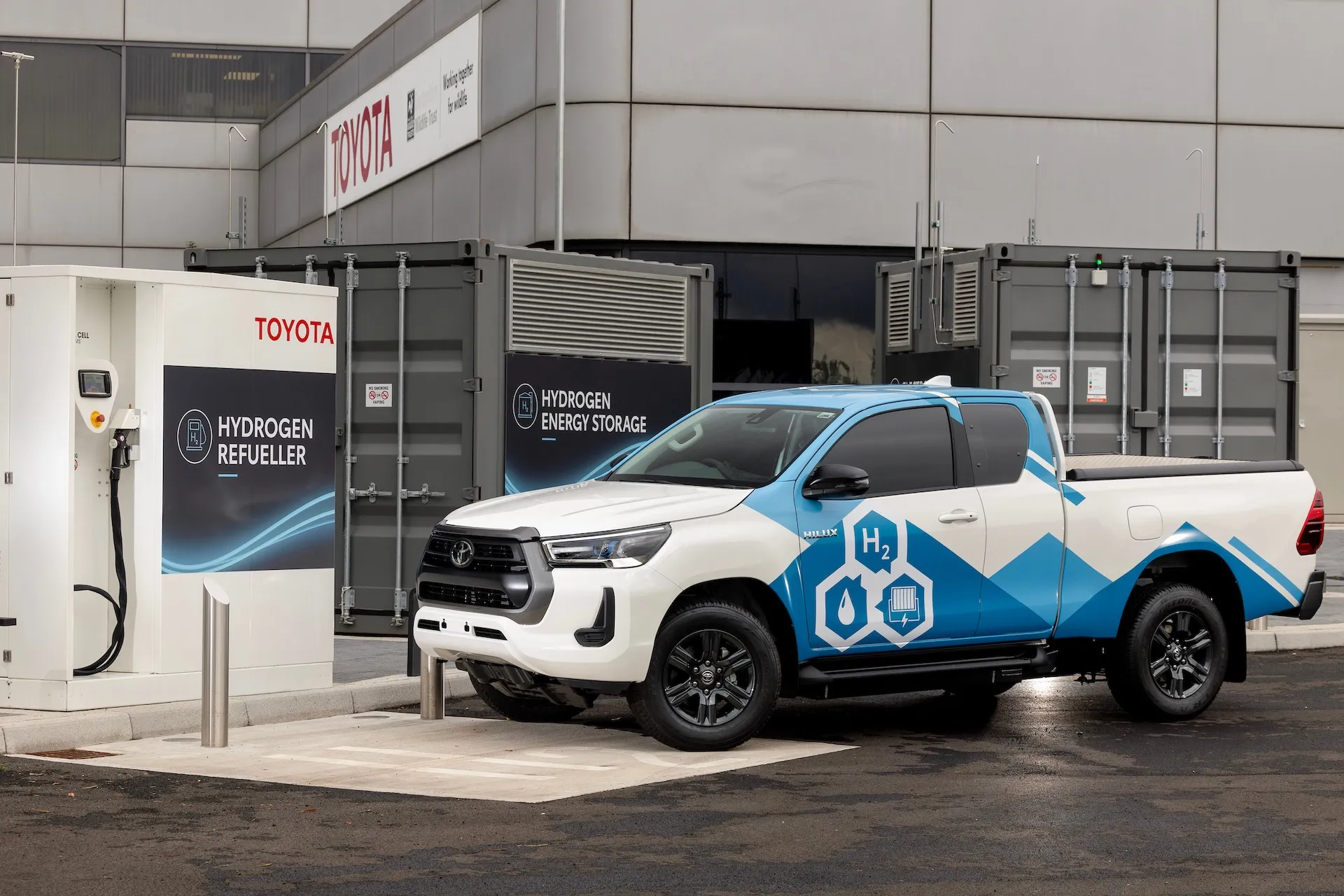Honda maps out its charge-port shift for brand new EVs. Toyota has revealed a hydrogen fuel-cell pickup challenge, and it’s able to take its greatest U.S. port “off the grid.” And can greater than 4 out of 5 new EVs bought in North Dakota actually nonetheless gasoline up with gasoline? This and extra, right here at Inexperienced Automobile Studies.
Toyota is producing its personal fuel-cell energy for its large Lengthy Seaside port with a distributed hydrogen system that’s fairly the excellent answer for reducing its emissions and vitality use. Beginning with agricultural methane piped in, the system not solely cuts its reliance on grid energy however can feed extra energy to the grid, generate hydrogen for port semis and new Mirai fuel-cell automobiles arriving at port, and generate water for laundry automobiles.
Toyota additionally revealed a hydrogen fuel-cell electrical pickup truck—within the U.Okay., and primarily based on that market’s closest equal to the Tacoma, a Hilux. Up to now it’s only a prototype challenge, funded partly with authorities cash, however such a truck might be launched later within the decade, Toyota says.
Honda has set the timeline for adopting Tesla NACS charging. And what which means, it appears, is that dealerships might want to assist help the CCS commonplace within the first EVs arriving subsequent yr, whereas these coming a yr later in 2025 can have the totally different NACS cost port.
And EV adoption is changing into extra polarized by state, finds J.D. Energy in a research out this week, with EVs changing into much more widespread in states which have supported them with insurance policies and incentives. Based mostly on this pattern, EVs will nonetheless surprisingly be the minority in states like North Dakota by 2035, it anticipates.
_______________________________________


